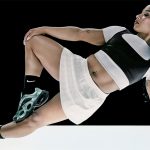Big 5 Sporting Goods Corp. saw its core market in El Segundo, a city in Los Angeles County, CA, where it is headquartered, baking in extreme heat in recent weeks. Still, president and CEO Steve Miller told analysts that cool weather in the early months of the second quarter ended July 2, caused sales to fall below the retailer’s already low target.
“As we anticipated, macroeconomic headwinds continue to impact consumer discretionary spending throughout the second quarter,” said Steve Miller, president and CEO. “However, we did not anticipate the unseasonably cool weather conditions that we experienced over the back half of the quarter, particularly in our core California market. The slow start to summer had a significant impact on our sales, which came in slightly below expectations.”
Same-store sales fell 12 percent, missing guidance that called for a same-store decrease in the high single-digit range. Sales continued to be challenged trying to beat significantly elevated levels during the pandemic and a recent broader slowdown in consumer spending amid inflationary pressures.
The 12 percent decline came on top of a tumble of 22.3 percent in the 2022 second quarter which followed a hike of 31.2 percent in the 2021 second quarter.
Big 5 also posted a loss of $282,000, or 1 cent a share, in the period against a profit of $8.9 million, or 41 cents, a year ago and earnings of $36.8 million. or $1.63, in 2021.
One positive was that the loss of 1 cent a share exceeded guidance in the range of negative 10 cents to positive 5 cents. The merchandise margins for the second quarter of fiscal 2023 were consistent with the prior year period and continued to run several hundred basis points ahead of pre-pandemic rates, supported by the evolution of Big 5’s pricing and promotional strategy.
The promotional change included becoming less reliant on chainwide print advertising and the benefits of reducing inventory depth and breadth due to fewer planned promotions.
However, the story of the quarter was the weather.
“While the weather in the late spring and early summer always varies, the cooler than normal temperatures and lack of sunshine across much of California were well beyond normal deviation. Summer recreation becomes increasingly important to our sales, starting the week leading up to Memorial Day and continuing throughout June,” said Miller. “Unfortunately, during that period this year, nearly everyday temperatures were well below historical averages and below last year’s temperatures. This had a very noticeable impact on sales of summer-related products across the board from swimsuits to shorts, to sandals, camping products, water sports, and so forth.”
Miller noted that in markets where weather was more normal or favorable, such as the Pacific Northwest, Oregon, Washington, and Idaho, and the Southwest, New Mexico, Big 5’s same-store sales for the quarter was roughly 1,000 basis points higher than in California.
In the last weekend of the second quarter, Big 5 also saw “the true arrival of warm weather across California and our sales responded very positively.”
Miller added, “While this was certainly too little, too late to meaningfully influence our second quarter results, we are encouraged that the improved trending creates some momentum that is carried over into the third quarter.”
Net sales for the quarter were $223.6 million, down 11.8 percent and in line with the same-store decline. Transactions for the quarter were down high single digits with the average ticket down low single digits. All major merchandise categories were down low double digits.
Gross margins eroded to 32.2 percent of sales from 35.0 percent, reflecting higher store occupancy and distribution expense, including costs capitalized into inventory, as a percentage of sales.
Miller said that while second-quarter merchandise margins were flat compared to the healthy margins generated in the prior year period, margins continue to run several hundred basis points above pre-pandemic levels, reflecting efforts in recent years to focus on margin improvement.
The CEO said, “Our team has done an outstanding job of managing inventory in an effort to align our inventory with a challenging sales environment. As a result, we have not needed to be overly promotional for the sake of clearing merchandise.”
Overall selling and administrative expense for the quarter decreased $4.2 million from the prior year, primarily reflecting lower employee labor and benefit-related expense and performance-based incentive accruals. As a percent of sales, selling and administrative expense increased to 32.4 percent of sales from 30.2 percent due to the lower sales base.
Miller said, “We are also continuing to diligently manage expenses in the face of widespread inflationary pressures. We remain prudent with our ad spending and we are carefully managing store labor usage and being more targeted in tailoring store operating hours to local shopping patterns.”
EBITDA tumbled 73.7 percent to $8.6 million compared to adjusted EBITDA of $32.7 million in the comparable period last year.
Inventory at the end of the fiscal second quarter decreased 2.2 percent year-over-year. Barry Emerson, CFO, said, “We feel good about our inventory position as we move through summer into fall.”
Looking ahead, Miller said the warmer weather, particularly in its core California market, has led to an improving sales trend versus the 12 percent Q2 sales decline with third quarter-to-date sales running down low mid-single digits, including a small benefit related to the timing of the July 4th holiday.
Nonetheless, Big 5 still predicted another challenging third quarter. For the third quarter, same-store sales are projected to decrease in the mid-single-digit range. EPS is expected in the range of 10 cents to 20 cents, down at the midpoint by 48 percent from 29 cents a year ago.
The retailer does not provide full-year guidance.
Miller said, “While we are cautious given that the economic health of the consumer continues to be a challenge, we feel that our product assortment is well positioned to meet the demand for the remainder of the summer season, which includes back-to-school and the start of fall work along with the Labor Day holiday.”
He added, “Over the past year, we have closely managed our inventory levels and maintained a healthy balance sheet. We believe there continues to be a buildup of inventory in the retail channel and we are in a position to take advantage of access through opportunistic buys to further solidify Big 5’s value proposition with our customers.”
Miller concluded, “In summary, as we are continuing to manage through a tough environment, we are confident that our focus on sustaining healthy merchandise margins, while closely managing both expenses and inventory levels will enable us to maintain a strong balance sheet and enhance our bottom line as economic headwinds begin to ease.”
Photo courtesy Big 5
















